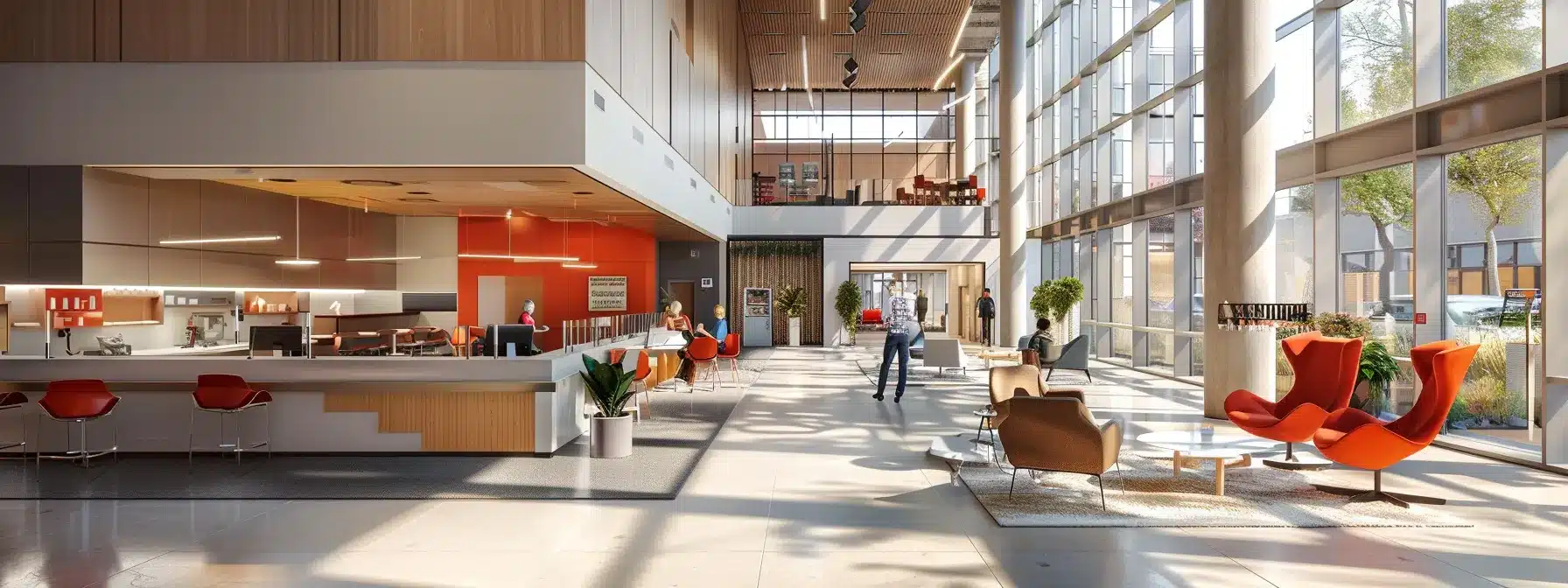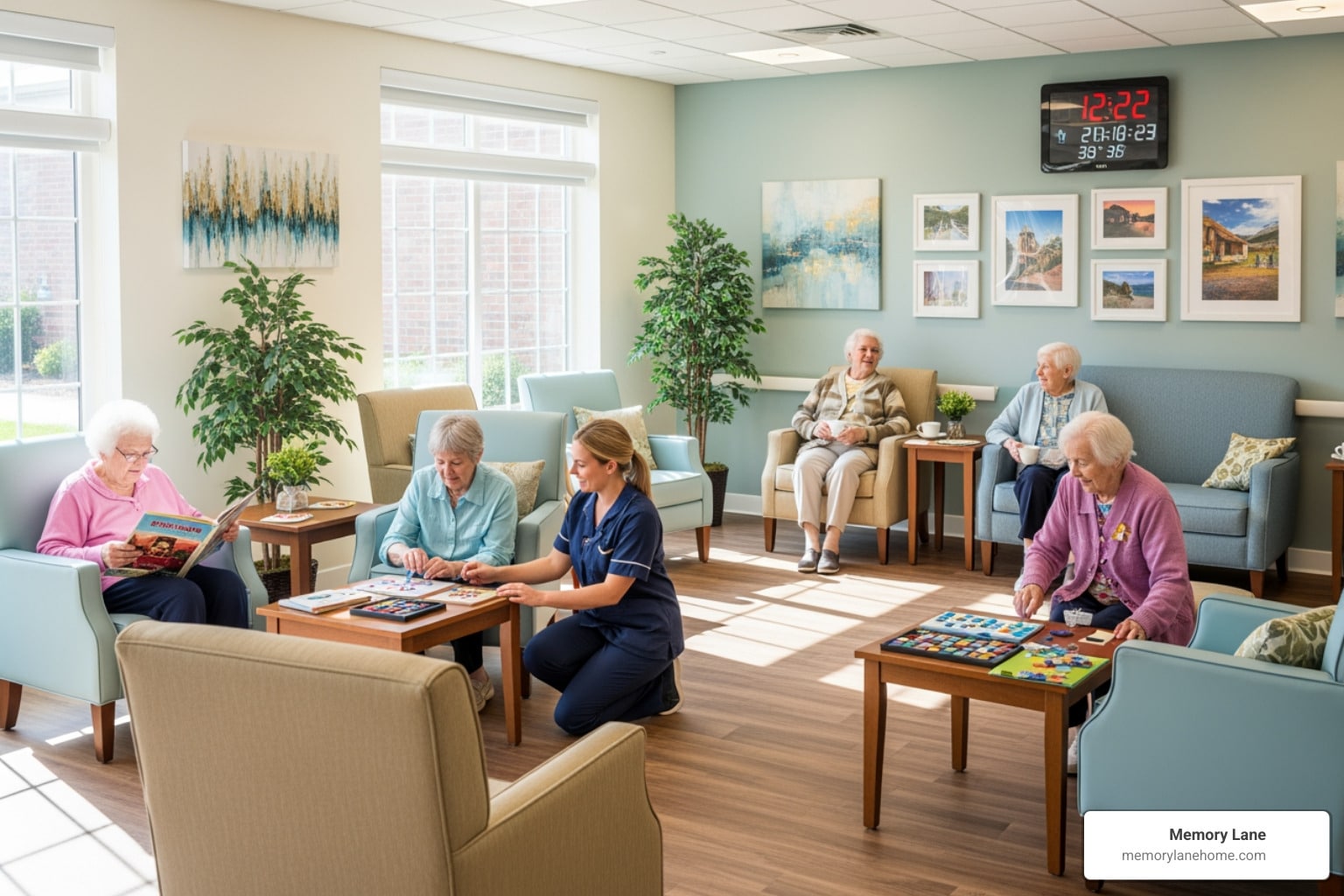Unlock expert support for dementia care. Our dementia care consultation offers personalized plans, resources & family empowerment.

Comprehensive Insights into Assisted Living Facility Types
Comprehensive Guide to Assisted Living: Table of ContentsTable Of Contents:
- Understanding Assisted Living Facility Types and Your Options
- Key Takeaways
- The Different Types of Assisted Living Facilities Available
- How to Select the Right Assisted Living Option
- The Benefits of Assisted Living Facilities
- Common Misconceptions About Assisted Living
- Future Trends in Assisted Living Facilities
- Resources for Families Considering Assisted Living
- Frequently Asked Questions
- Conclusion
Understanding Assisted Living Facility Types and Your Options
Are you struggling to understand the options available when choosing an assisted living facility? This blog post breaks down the different types of assisted living facilities, explains how to select the right option, and outlines the benefits of assisted living facilities. Readers will learn practical tips to address common challenges and make informed decisions for their care needs.
Key Takeaways
- memory lane assisted living provides specialized support for dementia care in a residential setting
- the facility blends independent living with comprehensive daily support
- personalized care plans and regular health assessments guide resident well-being
- community interaction and professional oversight ensure a secure, engaging environment
The Different Types of Assisted Living Facilities Available

The discussion outlines options from independent living for seniors and the services provided in assisted living facilities to personal care homes and their benefits. Topics include comparisons with nursing homes, continuing care retirement communities, and active adult communities.
This section also notes factors like expense, inflation, the role of a physician, caregiver support, and home care practices.
Exploring Independent Living for Seniors
Independent living for seniors offers an environment that combines freedom with the support provided by residential elderly care facilities. Experts note that these facilities often include nursing services and physical therapy options that assist in managing health concerns, thereby reducing poverty-related stress linked with costly medical expenses in areas such as Minneapolis.
Practitioners in this field emphasize that independent living settings deliver specialized care in a practical, comfortable atmosphere. Observations from senior care professionals show that offering a blend of independence and nursing support helps seniors maintain their dignity while accessing necessary physical therapy and other services.
Identifying the Services Offered in Assisted Living
The facility provides personalized services such as support from a registered nurse, oversight from the owner, and guidance from an ombudsman, ensuring that residents receive attentive care similar to a nursing home environment. The staff regularly reviews care plans and includes respite care to support both clients and their families, ensuring that immediate and long-term needs are met.
The services offered empower residents to live comfortably while receiving necessary health support, including visits from a registered nurse for regular check-ups. The involvement of an owner and input from an ombudsman ensure that each individual benefits from care practices that emphasize safety and personal well-being, all while offering options like respite care for family relief.
Understanding Personal Care Homes and Their Benefits
Personal care homes provide a secure environment where residents benefit from tailored assistance in areas such as medication management, meal preparations, and behavior monitoring. This practical setting offers comprehensive guidance that aligns with healthcare industry standards and established regulation.
Residents experience beneficial support through personalized services that promote a balanced routine and overall well-being, including regular oversight of medication schedules and meal planning. The care process incorporates steps that address individual needs, such as:
- Medication management
- Meal coordination
- Behavior assessment
- Compliance with regulation
Comparing Assisted Living to Nursing Homes
Assisted living facilities differ from nursing homes in their focus on providing a more autonomous environment while still offering valuable support for daily needs without the medical intensity found in nursing homes. Residents and families often assess factors such as the risk of injury and disease management when choosing an option, keeping in mind that assisted living provides attentive care while allowing more personal freedom. Financial strategies like a reverse mortgage may help cover costs, ensuring that the transition supports long-term well-being.
Compared to nursing homes, assisted living offers personalized attention to individual care plans, reducing the likelihood of an injury or exacerbated disease through consistent monitoring. This approach gives clients peace of mind as family members take comfort in knowing that a dedicated system addresses each resident’s unique requirements.
Investigating Continuing Care Retirement Communities
Continuing Care Retirement Communities offer a range of services that support residents from independent living to care-intensive options. These communities often work with supplemental security income programs to help manage costs while ensuring steady income streams, giving parents and other residents financial stability.
In these settings, family caregivers ensure that each resident receives the attention they need, creating an environment much like a supportive village. The active involvement of caregivers provides practical reassurance, making the community appealing for individuals looking for consistent income management and personalized care.
Evaluating Active Adult Communities
Active adult communities serve as a welcoming option among the types of long term care facilities, providing an environment where residents in old age can enjoy independence alongside available support. These communities offer practical solutions to common concerns such as cost of living and accessible bathroom designs, ensuring comfort and safety for residents.
Residents in a retirement community benefit from a balanced approach that prioritizes both independence and reliable care services. Active adult communities focus on addressing everyday needs while considering the cost of living, making them a sensible choice for individuals seeking to maintain their quality of life in their later years.
The journey from knowing your choices to making a wise decision is short and clear. Next, learn how to pick the care that best meets your loved one’s needs.
How to Select the Right Assisted Living Option

Assessing individual needs and preferences, considering location and accessibility, and reviewing costs are key when selecting assisted living. Visiting facilities, such as those in Staten Island, offers practical insights on memory care and housekeeping. Engaging with residents and staff reveals if a specific facility meets requirements for a place for mom, ensuring residential care aligns with family needs.
Assessing Individual Needs and Preferences
When assessing individual needs and preferences for assisted living, it is important to consider retirement goals and health care requirements. Professionals advise that each potential facility should be evaluated for compliance with the new york state department of health standards and law requirements:
- Service offerings and health care plans
- Safety and regulatory compliance
- Accessibility of home care in the united states options
Experts recommend a thorough review of each facility’s offerings before making a decision, ensuring that the level of support meets unique lifestyle needs. Evaluating factors such as personalized attention, available health care services, and the overall environment helps families and individuals make informed choices that support a secure retirement and peace of mind.
Considering Location and Accessibility
The selection process for assisted living options focuses on how well a facility’s location meets the needs of residents. It is crucial to consider proximity to family, nearby amenities on long island, and the availability of daily support for activities of daily living at facilities like memory lane home:
Assessing both location and accessibility helps in selecting a facility that suits specific care needs. Practical feedback and real-life examples from Memory Lane Home showcase how well-planned accessibility can contribute to a smoother transition and improved quality of life for residents in assisted living environments.
Reviewing Costs and Financial Options
The review of costs and financial options is crucial in selecting the assisted living facility that meets each patient’s needs, especially for those requiring specialized dementia care. Evidence from consumer reports and professional feedback highlights the importance of understanding how medicaid and other financial programs can ease the burden, with careful attention given to preventing any abuse of funds.
Experts advise that families create a comprehensive checklist of financial factors before making any decisions, as follows:
- Medicaid eligibility and coverage
- Comparative cost analysis of services, including dementia care
- Transparency in billing practices to avoid abuse
- Feedback from current patients and consumers
This method provides clear steps that help ensure that each financial decision supports a secure and well-informed living arrangement.
Visiting Facilities and Observing the Environment
Visiting facilities provides valuable insight into daily operations and resident safety. Observing features such as emergency preparedness measures, wheelchairaccessibility, and the overall layout offers clarity for families considering aging in place options in areas like New York City and Queens.
Experts recommend a detailed walkthrough of the environment, noting clear signage, open spaces, and staff responsiveness to potential emergencies:
Families gain practical assurance through direct observations and staff discussions.
Engaging With Residents and Staff for Insights
Engaging with residents and staff provides clear insights into the daily routines and care practices offered in various types of senior living facilities. This direct interaction helps families assess whether a long term assisted care facility can meet each veteran’s needs, especially addressing issues like dementia and loneliness with informed care strategies.
Feedback from residents and staff reveals practical examples of personalized care that supports independent living in a secure setting. Their honest observations and experiences offer valuable guidance to those seeking a long term assisted care facility, ensuring that concerns related to dementia and loneliness are effectively managed by dedicated professionals.
Selecting the right living option marks a clear step forward. Assistance and care await as facilities work to make life simpler and more rewarding.
The Benefits of Assisted Living Facilities

Assisted living promotes independence with essential support, enhancing social interaction and community engagement. Research shows these facilities ensure safety and health while offering a range of activities and personalized care plans. Fee transparency and clear contract terms shape reliable elderly care, providing tailored services that meet individual requirements efficiently.
Promoting Independence While Offering Support
Memory Lane Assisted Living promotes a balanced approach where residents enjoy a level of independence supported by attentive care that includes alzheimers care and enhanced accessibility. Expert staff ensures that residents receive timely assistance while maintaining personal space and self-reliance, addressing common concerns with practical solutions.
In this environment, individuals benefit from a structure that prioritizes personalized care plans aligned with their unique needs and preferences. This method has shown positive results in offering both support and freedom, allowing residents to enjoy daily activities confidently while ensuring consistent monitoring for those seeking alzheimers care and improved accessibility.
Enhancing Social Interaction and Community Engagement
Memory Lane Assisted Living creates an environment where social interaction thrives, allowing residents to connect with each other and staff in a welcoming community. The facility uses engaging activities and small group discussions to help seniors build relationships that reduce isolation and promote a sense of belonging.
The approach emphasizes community engagement, encouraging residents to participate in everyday events that suit their interests and abilities. This method offers practical benefits by enabling residents to share experiences and support each other while staying active in a secure setting.
Ensuring Safety and Health Through Services
Memory Lane Assisted Living shows that safety and health are maintained through strict care protocols and regular health assessments. The professional team conducts continuous monitoring and uses practical tools to address residents’ unique needs and ensure a secure environment.
The facility implements proven care practices that lower risks and enhance overall well-being. Clients benefit from timely health support and structured safety measures that foster a sense of security and comfort in their daily lives.
Providing Activities and Enrichment Opportunities
Memory Lane Assisted Living offers a range of practical programs designed to keep residents engaged and active. The facility provides a variety of activities that stimulate mental and physical well-being, with options including group discussions, exercise sessions, and creative workshops:
- Group discussions
- Exercise sessions
- Creative workshops
The team at Memory Lane Assisted Living ensures that every activity is tailored to support daily living, giving residents examples of how engaging routines can contribute to improved quality of life. Practical strategies such as scheduled social events and interactive classes help ease the challenges that come with age-related stress, making the environment both secure and lively.
Tailoring Care Plans to Individual Requirements
Memory Lane Assisted Living focuses on regulating care plans to cater to each resident’s unique requirements, using specific methods suited for dementia care and personalized medical support. The facility relies on practical examples and professional guidelines, providing streamlined approaches that directly address individual pain points and everyday needs.
The care strategy involves a detailed review of each resident’s health needs and lifestyle preferences to build a service plan that offers clear benefits and measurable outcomes:
Professional expertise and real-life successful instances form the basis for crafting these tailored plans and continuously adjusting them to maintain resident well-being.
Assisted living provides steady care and true support. Misunderstandings often cloud its benefits, urging a closer look at what really matters.
Common Misconceptions About Assisted Living

Dispelling myths, clarifying staff roles, explaining cost structures, and sharing family stories guide the discussion. The section shows that assisted living differs from nursinghome care through clear, practical insights. Each topic offers essential clarity and real-life examples to support informed decisions about assisted living options.
Dispelling Myths Surrounding Assisted Living
Assisted living facilities are often misunderstood, and many believe that residents lose their independence when they move in. Professionals at Memory Lane Assisted Living assert that these facilities provide a balanced setting where personal space and essential support coexist harmoniously, addressing common concerns with practical examples.
Experts note that myth-busting starts with clear communication about the role and structure of senior care environments. They outline the following points to clarify the benefits and realities of assisted living:
- Residents maintain control over daily routines
- Customized care plans address individual needs
- Support services promote, rather than restrict, independence
This practical approach helps families make informed choices based on accurate information rather than misconceptions.
Clarifying the Role of Staff in Assisted Living Facilities
The staff in assisted living facilities play a key role in ensuring residents receive attentive and personalized care. Their responsibilities include monitoring health, coordinating daily support, and offering practical assistance that helps alleviate the stress of aging, ensuring that each resident feels secure and valued.
Trained professionals work closely with families to adjust care plans and resolve challenges as they arise, keeping resident well-being front and center. Their approach combines expert knowledge with practical insights, ensuring that every individual receives the personalized support needed in a comfortable setting.
Understanding Cost Structures and Payment Options
Memory Lane Assisted Living clarifies that cost structures in assisted living facilities are designed with transparency and flexibility in mind. Financial assessments conducted by professionals help residents and families understand monthly expenses and payment options, ensuring that each person finds a plan that suits their needs. This practical approach assists in managing funds for specialized dementia care and personalized support services.
Experts at Memory Lane Assisted Living provide guidance on various payment options available for assisted living, from private funds to government programs. They offer clear examples of how payment structures work to cover daily services and health support while maintaining a steady cash flow for essential needs. This detailed explanation alleviates concerns and assists families in planning financial strategies effectively.
Myth-Busting: Assisted Living Is Not a Nursing Home
Assisted living offers a unique balance of personal independence and compassionate care, clearly separating it from the intensive medical environment of nursing homes. Expert observations indicate that residents enjoy customized support that emphasizes day-to-day quality of life, a benefit not typically found in nursing centers.
Research and professional insights confirm that assisted living settings allow individuals to maintain greater control over their daily routines while receiving practical health assistance. This clear distinction reassures families that selecting an assisted living facility means opting for a setting that values both independence and essential care support.
Real Stories From Families and Residents
Families at Memory Lane Assisted Living share genuine accounts of improved quality of life and personalized support that have reshaped their view on senior care. They express satisfaction in finding a facility where residents receive specialized dementia care, practical daily assistance, and a welcoming atmosphere that eases the stress on both the individuals and their loved ones.
Residents and their families report that the hands-on approach and consistent attention provided by the facility contribute to a sense of security and well-being. These real-life experiences offer clear, relatable examples of how a focused, small residential setting can address individual needs while fostering an engaging community environment.
Misunderstandings about assisted living fade when the future draws nearer. Next, new ideas and practical changes light the path to better living.
Future Trends in Assisted Living Facilities

This section examines how technology transforms senior care, anticipates changes in service demand, and brings forward innovative facility designs and amenities. It explores emerging trends in personalized care strategies and highlights the growing role of community involvement, offering practical insights that enhance the quality of assisted living options available today.
The Impact of Technology on Senior Care
Technology has transformed senior care by providing practical monitoring systems, real-time communication tools, and digital record-keeping that help caregivers tailor support effectively. These advancements prove valuable in assessing health, managing medication routines, and streamlining care processes at facilities known for their specialized dementia care.
The use of smart devices and innovative software has improved the efficiency of care in assisted living facilities by facilitating quick responses and accurate health assessments. This practical approach reduces challenges faced by residents and families, ensuring a secure setting where each individual receives consistent support.
Anticipating Changes in Demand for Services
Industry experts observe that the growing need for personalized dementia care and enhanced senior support is driving changes in demand for assisted living facility services. They note that practical shifts in population needs and evolving care requirements are prompting providers to adopt innovative strategies that ensure clear benefits for residents and their families.
Analysts highlight that emerging service trends reinforce the importance of flexible support systems tailored for individuals with memory challenges. This approach aims to meet the increasing demand for effective care solutions, ensuring that facilities remain responsive to the changing needs of the senior community.
Innovations in Facility Design and Amenities
Memory Lane Assisted Living introduces design updates that improve safety and comfort for residents. Innovations such as wider hallways, accessible floor plans, and easy-to-clean common areas contribute to a secure and welcoming environment for those needing specialized dementia care.
Facility upgrades also include modern amenities that support daily routines and social interactions. Enhanced outdoor spaces and updated recreational areas create an engaging setting, ensuring residents benefit from practical design choices that meet their evolving needs.
Trends in Personalized Care Approaches
Recent developments in personalized care approaches within assisted living facilities focus on tailoring support to meet individual needs effectively. Practical examples include the use of advanced health monitoring, customized daily activity plans, and interactive care routines:
- Advanced health monitoring systems
- Customized daily activity plans
- Interactive care routines
Industry professionals report that personalized care methods boost resident satisfaction and improve overall well-being. The focus on individualized care plans and straightforward support systems provides a clear path for enhancing quality of life in assisted living settings.
The Role of Community Involvement
Community involvement plays a crucial role in enhancing the support system within assisted living facilities, where residents benefit from regular engagement with local organizations and neighbor groups. This practice strengthens the bond between caregivers and residents, ensuring that care plans remain dynamic and well-informed through active participation from the community.
Inclusion of community activities helps residents feel more connected and valued, creating an environment that supports both mental and physical well-being. The facility relies on practical examples and expert insights to foster community interactions that directly benefit residents, addressing their needs with clear, actionable support.
The future of assisted living unfolds with simple truths and honest progress. Practical guides now await families ready to take the next step.
Resources for Families Considering Assisted Living

Government and nonprofit support programs, online comparison tools, checklists, senior care advisor guidance, and local advocacy groups offer families practical insights on assisted living facility options. Each resource supports informed decisions by providing clear, reliable information suited for those exploring assisted living for seniors.
Government and Nonprofit Support Programs
Government programs provide practical financial support and guidance for families assessing assisted living options. These programs help ease financial challenges and offer accessible resources, ensuring informed decisions when selecting specialized care for seniors.
Nonprofit organizations offer expert advice and additional support services to families researching assisted living facilities. They provide reliable information and direct assistance, improving access to essential care resources for seniors with memory challenges.
Online Tools for Comparing Facility Options
Memory Lane Assisted Living recommends using online platforms to compare facility options quickly and effectively. These digital tools provide detailed information on services, care levels, and cost structures, allowing families to assess and select facilities that meet their unique needs.
Online comparison resources offer clear insights and practical examples from verified listings, helping users navigate the assisted living landscape with confidence. This approach supports informed decision-making by presenting accurate data on various facility types, ensuring that families find a suitable and secure care environment.
Checklists for Evaluating Assisted Living Facilities
Families can use checklists to compare options when evaluating assisted living facilities, ensuring each facility meets the specific needs of their loved ones. Practical checklists help identify key service features, safety measures, and personalized care plans that align with residents’ requirements.
Expert insights suggest that checklists serve as a reliable resource for assessing aspects like caregiver support and facility environment. These reliable tools simplify the decision process and empower families to choose a care setting that offers both comfort and specialized care.
Guidance From Senior Care Advisors
Senior care advisors offer practical guidance to families exploring assisted living options, emphasizing a careful review of each facility’s care plans and personalized services. Their expert insights help families understand the differences between various facility types while ensuring that each option meets specific health and safety needs.
The advisors provide actionable tips based on real-life experience, advising families on how to consider key factors such as affordability, staff support, and environmental safety. Their knowledgeable counsel helps clarify the path to choosing an optimal assisted living setting that aligns with both resident preferences and regulatory standards.
Local and National Advocacy Groups
Local advocacy groups provide essential support by sharing up-to-date information on facility services and offering practical counseling to families evaluating assisted living options. Their guidance helps families navigate challenges related to specialized dementia care and overall residential support, ensuring that decisions are grounded in solid, firsthand expertise.
National advocacy organizations contribute expert advice and reliable resources that inform long-term care choices across the country. They offer practical insights into industry standards and transparent cost practices, empowering families to make decisions that align with both their financial plans and quality care needs.
Frequently Asked Questions
What types of assisted living facilities exist?
Facilities range from small, residential settings offering memory care to environments catering to adult foster care. Memory Lane Assisted Living, for instance, provides person-centered dementia support in Ypsilanti and the greater Ann Arbor area.
How does one choose the right assisted living option?
Selecting a proper assisted living option involves assessing care needs, facility atmosphere, and specialized dementia care experience available at Memory Lane Assisted Living. The right choice provides personal attention, comfortable surroundings, and trust.
What benefits do assisted living facilities offer?
Memory Lane Assisted Living offers a residential setting that provides adult foster care and memory care, ensuring personalized support and specialized care for those with dementia in a warm, home-like environment in Ypsilanti and the greater Ann Arbor area.
What misconceptions surround assisted living facilities?
Some assume assisted living is impersonal and rigid, yet Memory Lane bridges Adult Foster Care and Memory Care with a warm, home-like setting, offering personalized attention and specialized care for individuals facing dementia.
What resources help families consider assisted living?
Memory Lane Assisted Living offers expert guidance with specialized memory care, adult foster care resources, and family support services in the Ypsilanti and Ann Arbor area, easing decision-making for assisted living options.
Conclusion
Understanding the various assisted living facility types empowers individuals to make informed decisions that align with personal care needs and financial planning. The information provided highlights the practical differences among independent living, assisted living, personal care homes, and other senior care options, ensuring clarity in the decision-making process. Readers learn that each option offers distinct benefits, from maintaining independence to receiving specialized care for dementia and other age-related conditions. This knowledge motivates families to choose settings that promote a secure, personalized, and engaging environment for their loved ones.


